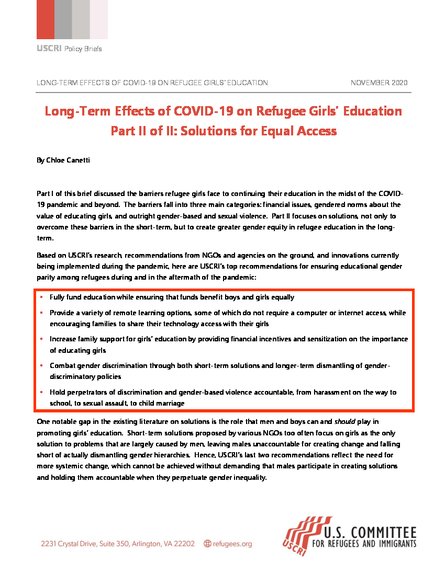
The Covid-19 pandemic has taken 1.6 billion students out of classrooms around the globe. Although students everywhere are struggling to access education during the pandemic, the problem is especially exacerbated for girls. Girls in lower-income countries face unique challenges both in getting to school and in staying enrolled. These challenges include everything from lack of funding, to sexist norms about girls’ education, to outright gender-based violence.
And it is even worse for refugee girls. Refugee children in general are disadvantaged, with only 61% of refugee children having access to primary school education compared to the global average of 91%. However, in large refugee-hosting countries such as Kenya and Ethiopia, there are only seven refugee girls for every ten refugee boys in primary school. The problem of accessing education for this population is not new, but it is worsening during the pandemic, threatening to reverse the recent progress that has been made in educational gender parity.
Part I of this brief discussed the barriers refugee girls face to continuing their education in the midst of the COVID-19 pandemic and beyond. The barriers fall into three main categories: financial issues, gendered norms about the value of educating girls, and outright gender-based and sexual violence. Part II focuses on solutions, not only to overcome these barriers in the short-term, but to create greater gender equity in refugee education in the long-term.